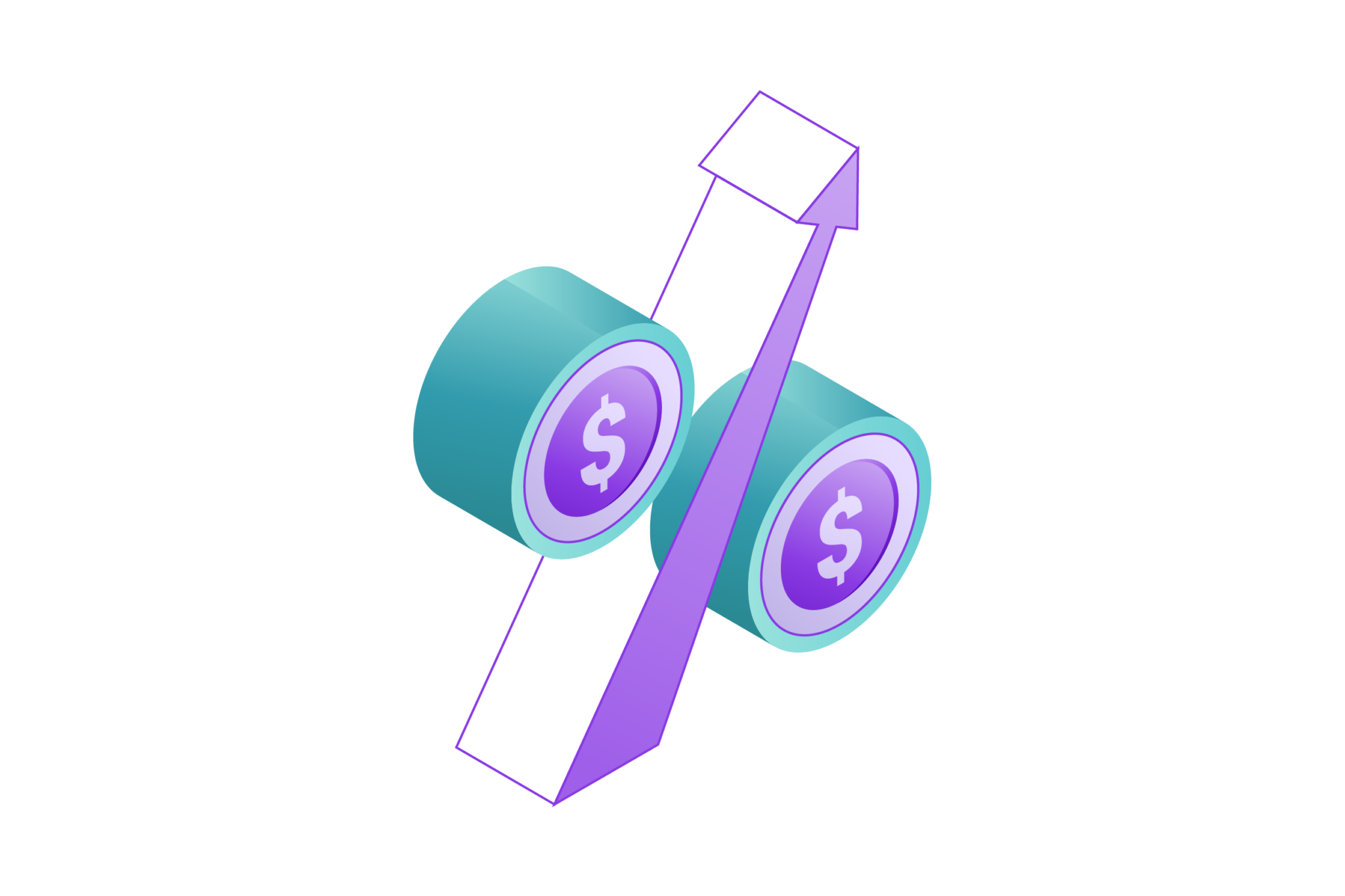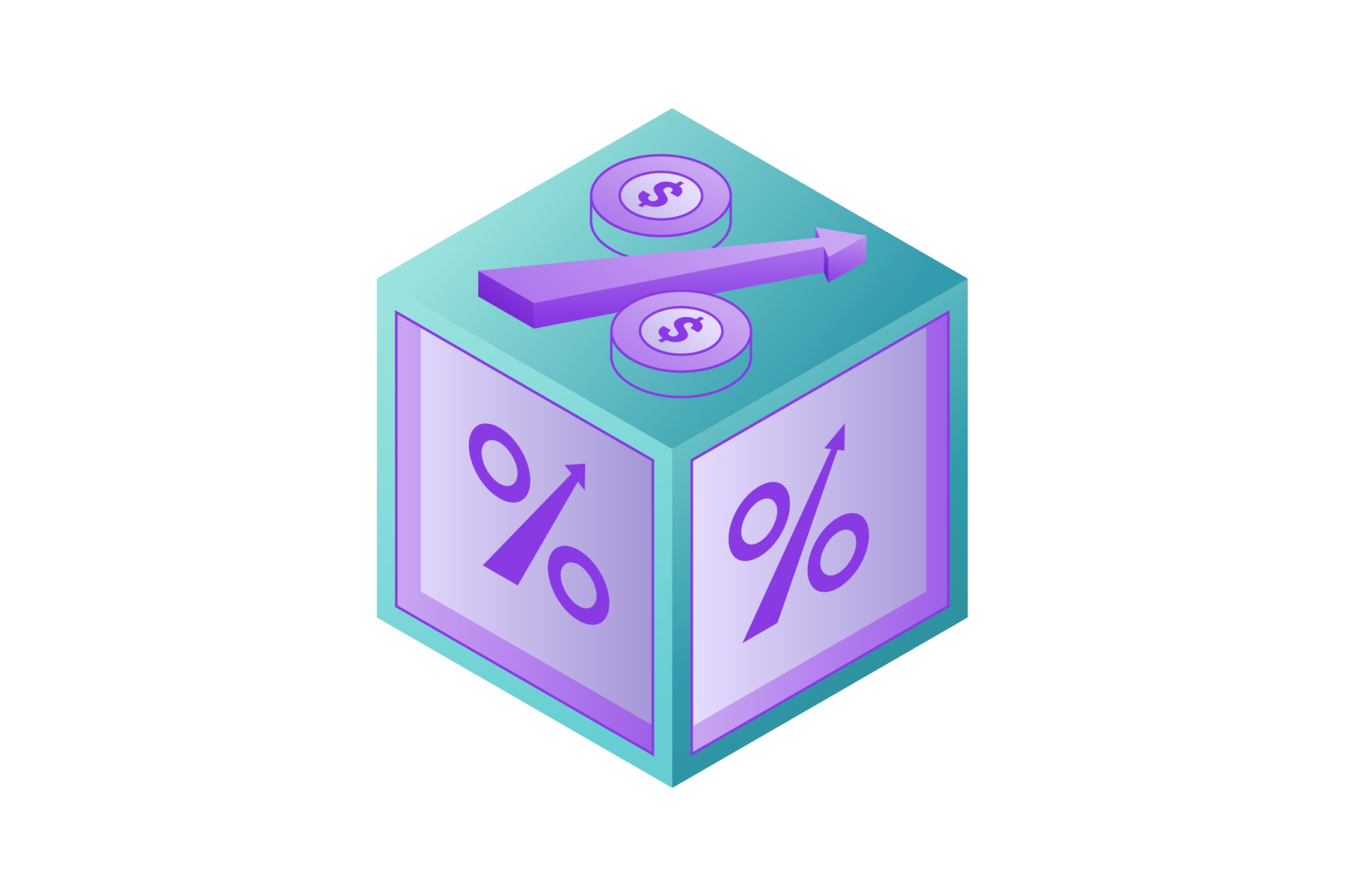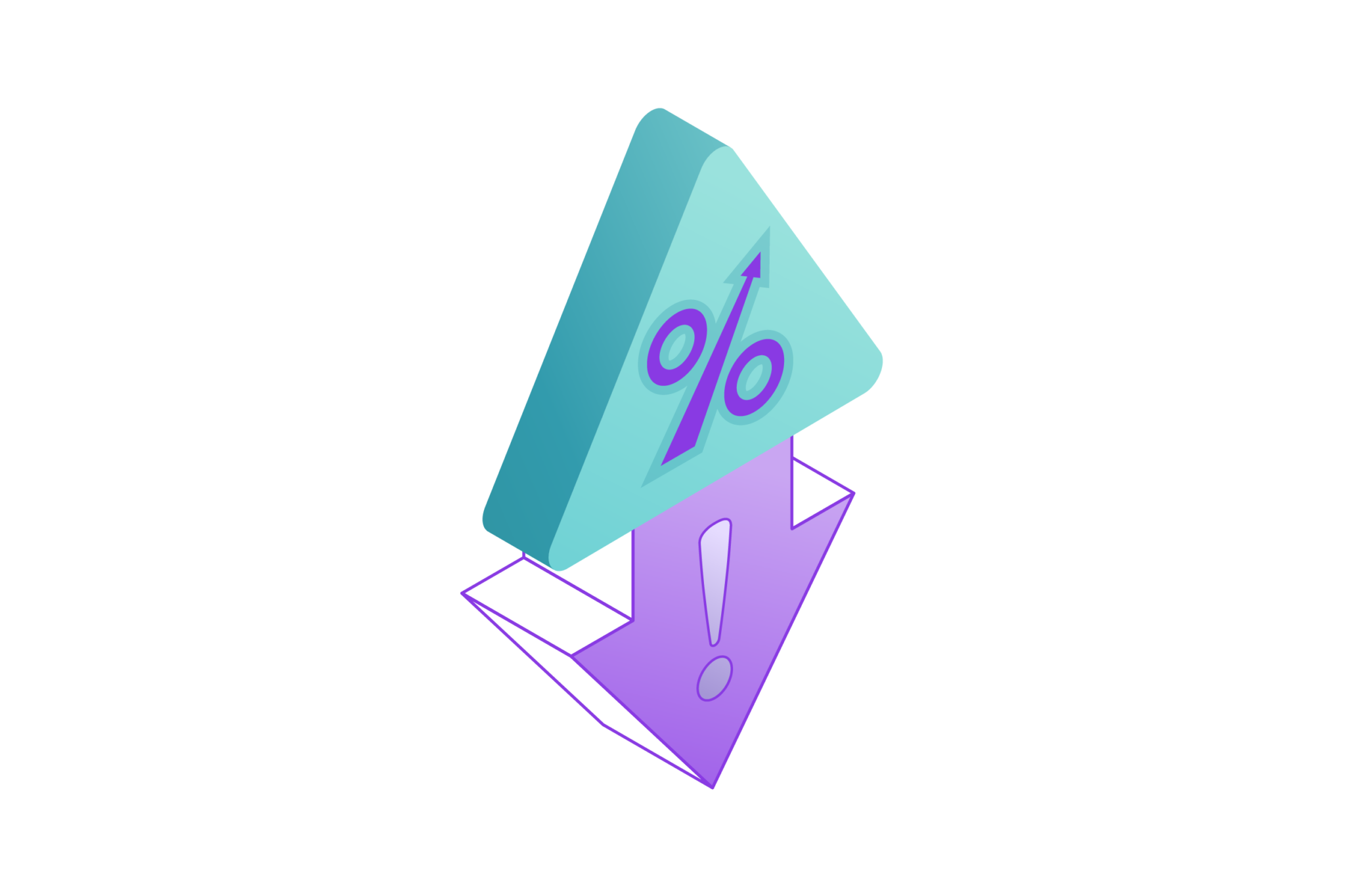
Interest rates are very important in the money world, affecting many parts of economic actions and personal finance choices. On a personal level, interest rates deeply affect how much it costs to borrow money and if loans can be paid for.
The details of daily money choices, like getting a loan to buy a house or taking out car loans and handling credit card payments, are closely connected to the current interest rate. For people making these choices, knowing more about the interest rate can help with smarter money planning. This makes sure that decisions line up well in today’s economy too. In this article, we will look at how interest rates work. We’ll talk about why they are important and what causes them to change for countries all over the globe, as well as for our own money matters.
Definition of Interest Rate

Interest rates are a basic idea in finance, which means the amount of money charged for borrowing or earned from saving. This important part helps both people and companies a lot. It has big control over different money moves and how the economy works. First, interest rates are like a fee for those who borrow money. When people or groups take out loans, like for a house or car, the interest rate shows how much extra they have to pay because of borrowing money. The cost of taking out loans is very important when making decisions. It affects how possible and tough it can be to get a loan.
On the other hand, interest rates help banks and financial groups earn money. These groups make money by taking interest on the loans they give out. A higher interest rate can lead to more possible profit. This makes for a tricky balance in the money world, affecting those who get loans and give them too. Big banks like the Federal Reserve in America or European Central Bank are very important when it comes to deciding what the interest rate will be. They carefully change these interest rates to control wider money matters. For example, an increasing interest rate can be used to stop inflation. On the other hand, reducing them might help boost economic growth.
Beyond these money-related points, interest rates also include the idea of how valuable different times can be for cash. This idea means that a dollar now is worth more than a dollar later. So, interest rates give people extra money for the chance costs that happen when they use their funds for loans or investments.
There are many kinds of interest rates, and each has its own use. The rate known as nominal interest doesn’t consider inflation, while real interest takes it into account. Effective interest rate consider the effect of compounding over a certain time and provide a clearer picture about money matters. Knowing the interest rate is very important for making good money choices. Whether people are thinking about taking out loans, handling investments or trying to make the most of their savings, understanding the interest rate is very important.
Types of Interest Rate

Different kinds of interest rates use several money-measuring tools for different reasons in various situations. Here’s a breakdown of some key types:
1. Nominal Interest Rate
The simple interest rate is the basic cost of borrowing money or making an investment without considering price rises. It helps you understand what it costs to borrow money or make a profit on an investment. In simple terms, if someone borrows money and has a 5% interest rate on it, they will need to give back an extra 5% of that borrowed amount. But don’t forget – this doesn’t account for inflation or anything like that yet.
The name rate shows a clear number for money moves, but it may not show the real effect on our economy when you think about rising prices. So, it’s very important for people who borrow and those who invest to think about the true interest rate. This will help them figure out how much they can really buy with their money in these deals.
2. Real Interest Rate
The true interest rate changes the real price of inflation. It gives a better view of how much it costs to borrow money or get back on an investment after considering inflation. This is worked out by taking away the inflation rate from the simple interest rate. For example, if the interest rate is 8% and inflation is 3%, then the real return would be 5%. This change is important because it takes into account how the value of money can shift over time.
A good real interest rate shows that the investment or loan is making more money than inflation, while a bad one means the buying power is less. People who invest money and make plans watch the real cost of borrowing closely. They do this because it helps them decide cleverly, as these interest rates show what really happens to an economy with financial activities.
Also Read: Market Maker Options: Definition and How They Make Money
3. Effective Interest Rate
The good interest rate, also called the yearly equal rate (AER), does more by thinking about compounding. It gives a complete picture of the full expense of borrowing money or earning from an investment over a certain period of time. For example, if a loan adds interest twice each year, the effective rate would show how it affects the total cost of paying for all that extra money.
This rate is very useful for comparing different money products or understanding what a loan really costs. It takes into account how often interest adds up and gives us the same measure to compare them with each other. People who take out loans or invest can use the real rate of interest to make smarter choices. This helps them really know what things will cost in the long run and avoid mistakes with their money.
Factors Influencing Interest Rate

Many things affect the interest rate, and together they change how people borrow and lend money. Knowing these things is very important for guessing how the interest rate will change and making wise money choices. Here’s a detailed exploration of some key elements:
– Inflation Interest Rate
Inflation has a big effect on the interest rate. This is due to the decrease in value that money loses over time. Banks want payment for the drop in real worth caused by inflation. When prices go up a lot, people who lend money think they will lose more buying power and so charge extra for loans.
Big banks keep a close eye on the changes in prices, and they often change interest rates to make sure that prices stay stable. Central banks use money rules to keep a check on inflation. They want growth in the economy and high prices, but not so much that it hurts our money value.
– Central Bank Policies
The big banks, which design money rules, have a lot of power over the interest rate we pay for borrowing. They use tools like the federal funds rate to manage short-term interest rate and reach wider economic goals. For example, when the economy is growing fast, banks may increase the interest rate.
This aims to stop too much borrowing and spending, which can cause prices to rise quickly. On the other hand, in tough economic times, central banks might reduce interest rates to encourage borrowing and investment. This helps speed up the economy’s healing process. The choices of big banks affect the whole money system. They change how much it costs to borrow, what investments give back, and overall work in the economy.
– Economic Conditions
The health of an economy is very important in deciding the interest rate. In times when the economy is doing really well, usually more loans are needed because businesses grow and people spend more money. This great need often makes interest rates go up because money lenders try to balance the supply and demand for loans.
On the other hand, in economic slowdowns, central banks might lower the interest rate to make people want to borrow money and spend. This helps get things moving again for the economy, which is struggling. How the economy goes up and down is very important for deciding the interest rate. These affect how much people or businesses have to pay when they borrow money.
Why Interest Rate Crucial?
Interest rates are very important for how economies and money markets work. They affect different parts of what people decide about their finances, both individually and together. Here’s an in-depth exploration of why interest rates are crucial:
1. Cost of Borrowing
The amount of money you have to pay back is a big part of the interest rate. This greatly affects people, companies and governments. When interest rates are high, the price of loans goes up a lot. This makes it more costly to borrow money. This directly hits people who want loans for homes, cars or personal use. They end up having to pay more each month. For companies, higher borrowing costs can lead to less money invested in things like tools and buildings. This might affect growth projects too.
Governments also feel the burden of a high interest rate because handling public debt becomes more expensive. On the other hand, when interest rates are low, borrowing becomes cheaper. This encourages people to spend and invest more money. This makes it easy for people to buy things, which encourages growth. People and businesses are encouraged to get loans for many reasons, like buying houses or growing their companies.
2. Investment Decisions
The interest rate has a big impact on where people put their money in different areas. When interest rates are high, it costs more money to finance projects, so businesses have to think hard before spending on capital. A high interest rate can cause less money to be spent on building roads, technology and other growth efforts. This, in turn, may affect how much the economy grows. On the other hand, low interest rates encourage companies to spend money as borrowing costs go down.
This boost to investment can help the economy grow, create jobs and make work more efficient. People who invest money also think about the interest rate when deciding what to do with their cash. For example, when interest rates are low, people might switch to risky things like stocks that pay more profits. The important connection between interest rates and what people decide to invest in shows how they play a big part in creating economic changes.
Also Read: Market Making: Strategies and Techniques
3. Monetary Policy Tool
Big banks use interest rates to conduct money policies. This affects how the whole economy works. Central banks want to achieve certain money goals by changing the interest rate. For example, when the economy is growing fast and prices are going up a lot, central banks might increase the interest rate to reduce spending.
This stops too much growth in the economy from happening. On the other hand, in times of economic slowdown or recession, central banks can cut interest rates. This helps to make borrowing and spending cheaper, which is vital for lifting up an economy again. Managing interest rates well lets central banks handle the tricky balance between controlling inflation, keeping jobs steady and making sure everyone’s economy is healthy. The choices made by large money groups affect how people borrow and invest. They also change their spending habits in markets all over the world.
4. Inflation Management
The interest rate is tightly connected with the control of inflation, a big economic issue. Main banks choose interest rates to reach a target rate of inflation. A high interest rate can help fight inflation by controlling how much people spend and borrow. This helps keep prices stable. However, a lower interest rate can help the economy and stop falling prices when bad times happen.
Central banks carefully adjust interest rates to find the right mix of boosting economic growth and keeping prices stable. The complicated balance between the interest rate and controlling inflation shows how important money leaders are in guiding the overall economy to long-term, even growth.
5. Consumer Spending
The interest rate affects how people spend money, making them choose more carefully when shopping. When the cost of borrowing money is low, people are more likely to get loans for big things they want to buy, like houses and cars. When interest rates are low, borrowing money is cheaper.
This causes people to spend more on important things. This extra money spent by people helps the economy grow. Instead, a higher interest rate can cause people to spend less money. This is especially true in areas that mostly depend on credit, like real estate or car businesses. Consumer behavior changes a lot when interest rates go up or down. This shows that these interest rates affect the whole economy and influence different businesses too.
6. Exchange Interest Rate
The connection between interest rates and exchange rates is very important to understand. In countries with higher interest rates, foreign money might come in looking for bigger returns on investments made using that country’s cash. This flow of money can cause the value of currency to rise, impacting how much one type is worth compared with others when exchanged.
On the other hand, a low interest rate might cause money to be worth less as investors look for better returns in different places. Changes in exchange interest rates are very important for global trade. They can make exports stronger or increase the cost of buying from other countries. Global money markets are tied together. So, it’s important for those who make rules and businesses to think about how changes in interest rates affect the worth of currencies. This can then impact trade balances between countries and the movement of funds across borders.
7. Savings and Investments
The interest rate directly affects choices about saving and investing for people and companies. High interest rates give people more money back on savings accounts, certificates of deposit and other safe investments. This gives people a reason to save their money and helps them get richer. On the other hand, people looking for bigger profits might move into risky things like stocks when interest rates are low.
People planning for retirement or managing investment portfolios need to understand the connection between interest rates and returns on investments. Moreover, companies think about interest rates when they are looking at choices for money to grow or do big projects. The complicated connection between interest rates, savings and investments shows how they affect getting richer and the bigger money world.
Conclusion
Knowing what the interest rate is is very important. It helps in making money choices, deciding economic rules and moving the world economy forward. The interest rate affects every part of the economy. They influence choices made by people, companies and governments too. Central banks make careful plans for rules, and interest rates on loans and investments help guide everyday money matters. This is a basic rhythm in the financial world.
This idea is built on the understanding that interest rates are a strong tool used by central banks. These money bosses use the interest rate as their main tool to make big plans, making sure that inflation is under control and people have jobs. They also look after the whole economy, so everyone does well. The choices made by big banks about interest rate affect the whole banking area. These decisions change borrowing costs, guide investments and control how people spend money. Understanding this changing connection helps people and those who make rules see ahead and react to the always-changing money world.
Disclaimer: The information provided by Quant Matter in this article is intended for general informational purposes and does not reflect the company’s opinion. It is not intended as investment advice or a recommendation. Readers are strongly advised to conduct their own thorough research and consult with a qualified financial advisor before making any financial decisions.

I craft stories that make complex ideas clear. I simplify the blend of data science, machine learning, and crypto trading, showcasing how advanced tech and quantitative models analyze data for informed trading choices. Join me in exploring the realm of quantitative trading, where my narratives make intricate concepts easy to grasp.
- Alifia Berizkyhttps://quantmatter.com/author/alifia-berizky/
- Alifia Berizkyhttps://quantmatter.com/author/alifia-berizky/
- Alifia Berizkyhttps://quantmatter.com/author/alifia-berizky/
- Alifia Berizkyhttps://quantmatter.com/author/alifia-berizky/
